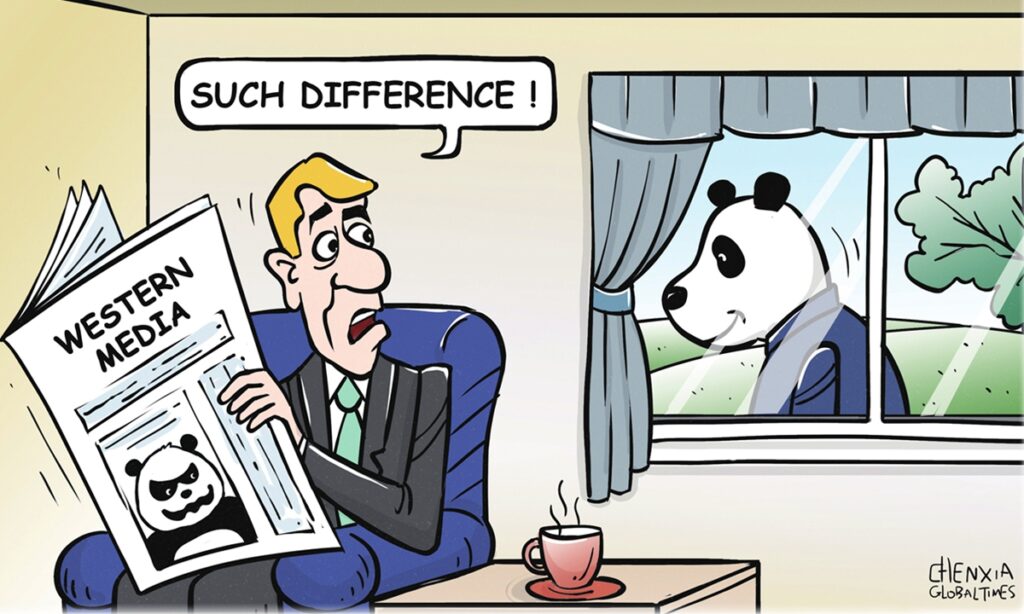At the moment of US Secretary of State Antony Blinken’s arrival in Beijing, CNN, the Washington Post, BBC and some other Western media used a grayish “underworld filter” on China, maliciously fabricating the weather in Beijing as cloudy and hazy when Blinken got off the plane.
The State Department Bureau Chief of VOA Nike Ching posted a video on Twitter on June 18 claiming that when Blinken’s plane landed, Beijing’s sky was full of heavy haze. However, the weather was clear, as evidenced by videos posted by the Chinese media.
The move reflects a long-standing stereotype of the West and a filter formed by a solidified ideology about China, it is a deep-seated instinct engraved in their bones, said Shen Yi, a professor at the School of International Relations and Public Affairs of Fudan University.
“They may hope to pour cold water on Blinken’s trip. They think that China-US relationship has come to this situation for a long time, just like the weather, it will not become sunny from foggy all of a sudden with this visit. I think they may have deliberately changed the color of the photo,” said Liu Weidong, a research fellow at the Institute of American Studies at the Chinese Academy of Social Sciences.
Ahead of his visit to China, Blinken had stressed “the importance of maintaining open lines of communication to responsibly manage the US-PRC relationship to avoid miscalculation and conflict.” But the public opinion warfare has always been not only a “weathervane” but also a “fuse.”
“The Western media itself is an integral part of the political ecology, and is a tool used by Western elites to manipulate the public’s perception of the outside world,” Shen told the Global Times.
Liu noted that the main purpose of this visit is to break the disturbing situation without high-level exchanges between the two countries, although Blinken or US officials believe that this trip will not achieve a great breakthrough, they still recognize its significance. Differently, the Western media seem to be pessimistic about the prospects of China-US relations.
This is not the first time Western media have played with the tones of filter to show their own emotions. In addition to distorting the facts, these media have repeatedly stigmatized China through visual vilification, which is totally contrary to their so-called “neutrality and objectivity.”
In January 2021, BBC showed how well its skills of applying “filters” in the documentary “The road back to Wuhan.” The city of Wuhan looks grayish in the film. Before that, another BBC video titled “How everyday life has changed in Wuhan” was released in December 2020. The English and Chinese versions of the video used exactly the same content, but showed different color effects.
“Western media often make some modifications on photos and pictures to express their own sentiment, it is just usual for them. I think the motivation lies in the tensions between China and the US, which cannot be resolved through such a visit, so we should not be too hopeful,” an expert told the Global Times.
Liu said this does have a negative effect on the American public’s perception of China, because the public actually learns about China through the media, which sometimes does report China with colored glasses. There is dissatisfaction with China, and the media add fuel to the flame.
Some Chinese netizens commented that “with colored glasses, the Western media perceive everything as gray.”
“I believe that some Americans will also have this view, the purpose of these media is to subliminally imply that China is not as good as themselves. The media is trying to cast a shadow on the future development of China-US relations,” Liu said. He also added that it is a political implication and a negative expression of this visit. It is unnecessary to deliberately make such uglification, and China will never enhance itself by uglifying others.
(Global Times)




